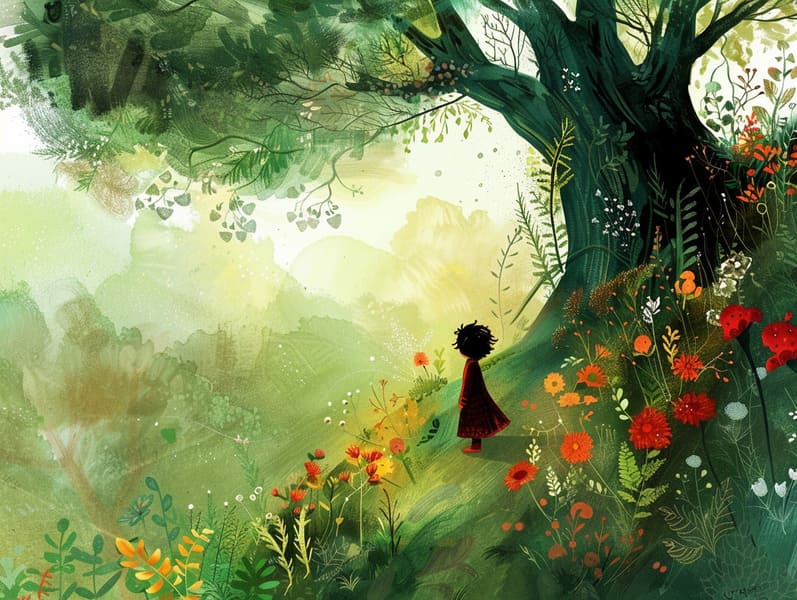
Legendary fairy tales have timeless appeal. These stories have been narrated from one generation to the next far before they were ever transcribed. They originated from a variety of backgrounds, including European traditions. They were initially passed along among older generations, often carrying themes and messages reflective of the societal norms and beliefs of the time.
The Brothers Grimm, Jacob and Wilhelm (the Grimm brothers), were among the first to collect many of these beloved narratives. Their compilation, "Grimm's Fables," included classics like "The Story of Cinderella," "Hansel and Grethel," and "Little Snow White," which have since become essentials in the world of traditional fairy tales. Similarly, the Danish author's enchanting tales, such as "The Mermaid," and "The Duckling's Story," have touched hearts worldwide, ensuring their place in the pantheon of beloved fairy tales.
Despite their historical roots, traditional fairy tales remain as applicable as ever, especially as nighttime stories for kids. These charming stories are now available in various formats, including richly illustrated books, magical animations, and web-based fairy tales.
Their lasting presence can be connected to several whimsical characteristics:
Valuable Lessons: Old fairy tales often impart important moral lessons. Narratives like "The Boy Who Cried Wolf" teach the virtue of honesty, while "The Story of the Tortoise and the Hare" point out the benefits of determination and unpretentiousness. These stories offer young readers clear distinctions between virtue and vice, developing their moral compass in a kind yet important way.
Compassion and Knowledge: Classic fairy tales frequently feature heroes facing challenges and problems, fostering children to feel with their struggles and celebrate their triumphs. For instance, "Beauty's Beast" illustrates the significance of looking past the exterior to see the inner core of a character, developing understanding and discernment.
Cultural Awareness: Many timeless fairy tales are deeply embedded in the cultural contexts from which they developed. Learning from these narratives can provide delightful insights into different traditions, strengthening a sense of global understanding and awareness.
Imagination and Creativity: The extraordinary elements in fairy tales—mythical creatures—trigger children’s imaginations. These tales guide readers to imaginary realms, provoking inventive thinking and a sense of fascination that continues a lifetime.
Old fairy tales are not only fantastical but also teaching. They act as whimsical tools in nurturing various thinking and feeling skills in little ones. When classic fairy tales are told out loud, they improve language proficiency by introducing new lexicon and detailed sentence structures. This practice also improves auditory skills and focus, as kids hang on every word, eager to see what happens next.
Furthermore, conversing about the themes and characters of ancient fairy tales can sharpen analytical skills and intellectual skills. Children are shown to pinpoint patterns, expect results, and catch on to cause and effect. These discussions also ease children verbalize their thoughts and feelings, advancing their emotional intelligence.
In today’s digital era, the abundance of web-based fairy tales has made these narratives more available than ever. Websites and online apps provide comprehensive collections of bedtime fairy tales that can be perused or listened through anytime, anywhere. Fairy tales voiced are particularly widespread, supplying an charming way for kids to enjoy these fantastical tales. Spoken stories and read-to-me stories carry characters and settings to life, often augmented by mesmerizing background sounds and melodies that boost the storytelling experience.
The lasting allure of traditional fairy tales lies in their ability to evolve to present eras while retaining their key morals. Contemporary updates of these narratives often incorporate more inclusive figures and modern settings, making them accessible to today’s audience. However, the fundamental themes of valour, sympathy, and fair-mindedness remain unchanged, continuing to reach young listeners of all ages.
Old fairy tales also offer a sense of assurance and predictability. They highlight a structured narrative with a obvious beginning, middle, and end, check here often closing with the solving of conflicts and the triumph of virtue over vice. This predictability can be calming for the young, proffering a sense of unwaveringness in an dynamic world.
Old fairy tales continue to entrance and enlighten new generations, maintaining their magic and pertinence in modern society. As nighttime stories for kids, they put forth a perfect blend of charm and understanding, sustaining moral values, empathy, and creativity. The presence of digital fairy tales and the favor of fairy tales spoken ensure that these old stories remain available to new generations.
By protecting and spreading these narratives, we continue to appreciate the rich tapestry of folklore and cultural heritage. Whether you are reading a artistically illustrated book, delving into a web-based collection, or listening on an spoken story, the captivation of old fairy tales is always within reach. These fairy tales teach us of the eternal power of narratives and its ability to join us across generations and cultures.
Regardless if you are delving into a vibrantly illustrated book, viewing a electronic collection, or listening on an read-aloud story, the splendor of old fairy tales is always within reach.
These tales emphasize of the unfading essence of fairy tales and its ability to bind us across eras and regions, casting a charm that captivates and teaches alike.